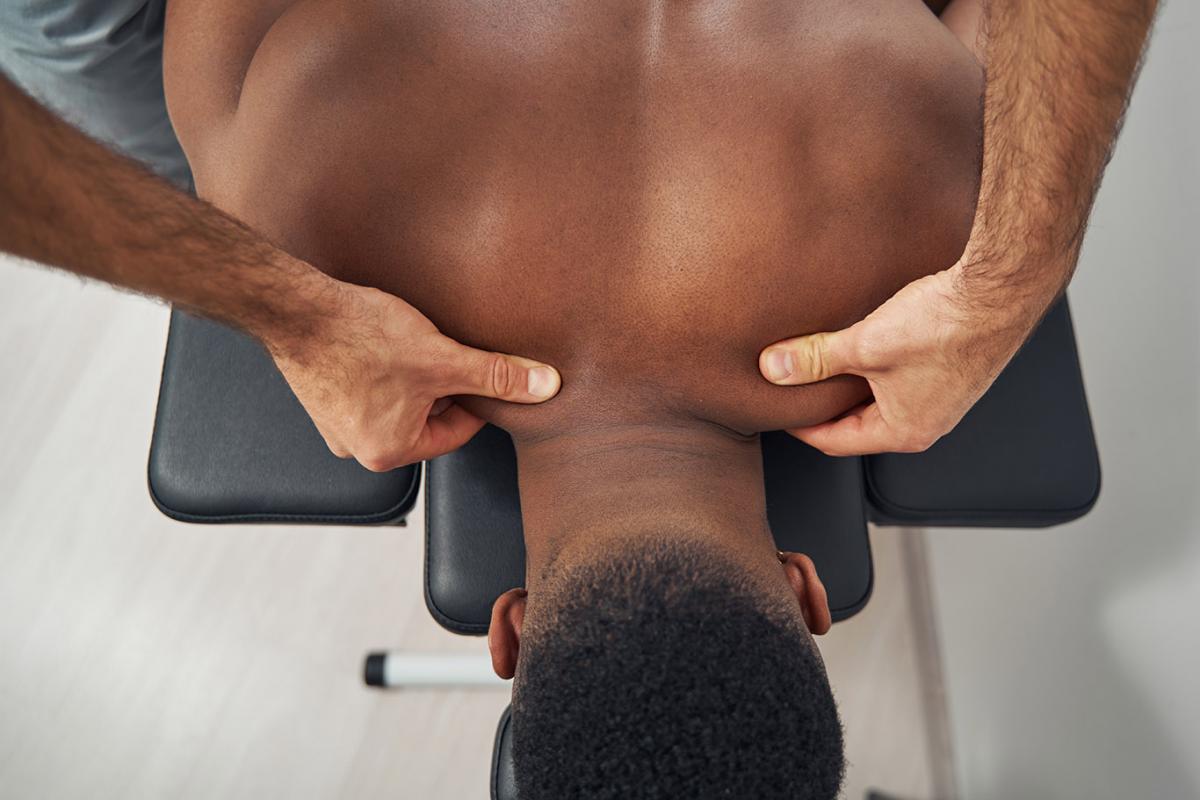How Do I Find Trigger Points in My Body?

July 2022
If you are experiencing aching pain or stiffness in the neck or a limb, you may be experiencing trigger points. Patients suffering from trigger points can often find the knot in their muscle if they poke around long enough. Sometimes, a trigger point won’t feel sore or achy until you apply pressure to it.
If you hold the pressure for a couple of seconds and the soreness disappears once the pressure is removed, then you have likely found one of your trigger points. Trigger points often form in muscles that have been injured, so those muscles are typically the best starting point when looking for trigger points.
What if I Feel Pain Someplace Else?
Trigger points can cause pain in another part of the body—even if there is no apparent connection between the location of the pain and the trigger point. This is known as referred pain, and it is common with trigger points.
Which Muscles Commonly Form Trigger Points?
Upper Back
Many people get trigger points in their trapezius muscle, which covers the back of the shoulders and the neck. Office workers with poor posture often develop trigger points in this muscle after long days bent over a keyboard. For some, working on posture or investing in a more supportive chair helps. Injuries from sports or poor body mechanics are other common causes of trigger points in the trapezius muscle.
Lower Back
The muscle spanning the area of the lower back between the ribs and pelvis is the quadratus lumborum. The quadratus lumborum muscle is essential for walking, standing and sitting. People with poor lower body posture sometimes develop trigger points. Genetic factors like having one leg that is shorter than the other may also lead to trigger points because the muscles need to overcompensate for the imbalance.
Legs
Trigger points in the hamstrings and calf muscles are often caused by sports injuries or harm during daily activities like walking or running. Properly stretching the hamstrings before physical activity helps warm them up and usually reduces the risk of injury, and, subsequently, trigger point formation. Excessive walking and poor footwear like high heels may put additional stress on the leg muscles.
Other Muscles
The back and leg muscles are some of the more common areas where trigger points form, but you can get a trigger point anywhere. Even jaw muscles develop trigger points if someone has a habit of grinding or clenching their teeth in their sleep. Chronic teeth grinding or jaw clenching may potentially lead to a more serious condition known as temporomandibular joint (TMJ) disorder.
How Can I Treat Trigger Points?
Trigger points may be a symptom of an underlying condition that may require medical intervention to prevent it from worsening. Lifestyle or mechanical changes may reduce the likelihood of further trigger point development, but it doesn’t treat the muscle knots you currently have. Many medical experts recommend speaking with a doctor for severe or worsening trigger point pain so you can create a treatment plan that works for you.
For patients seeking fast relief, trigger point injections performed by skilled pain management specialists is often the best course of action.
Massage Therapy
Massages are an excellent way to relax, and many skilled massage therapists can loosen tight muscle knots. The outcome of massage therapy will typically depend on your individual circumstances like the cause of your trigger points, their depth and severity, and the masseuse’s abilities. People seldomly experience complete or near-complete relief after only one session, so massage therapy usually requires multiple visits.
Physical Therapy
Physical therapists often help patients find and treat their trigger points. Physical therapy is often a great way to heal from an injury and learn new stretches that could help prevent future damage. Physical therapists can also help correct poor posture and other habits that could cause trigger points.
Some patients with gait or posture issues may benefit from first finding relief through trigger point injections and then working with a physical therapist or even an occupational therapist to address the problems that are causing their trigger points to form.
Trigger Point Injections
Trigger point injections are a minimally invasive outpatient procedure where a doctor injects the patient’s trigger point with an anesthetic and corticosteroid to loosen the knot and quickly alleviate the pain. Trigger point injections are quick, relatively pain-free and take effect almost immediately.
Call Non-Surgical Orthopaedics for a Trigger Point Injection in Georgia
If you or a loved one is suffering from painful trigger points and live in Marietta or Carrollton, you may find relief with trigger point injections. Contact us by calling 770-421-1420 today.






